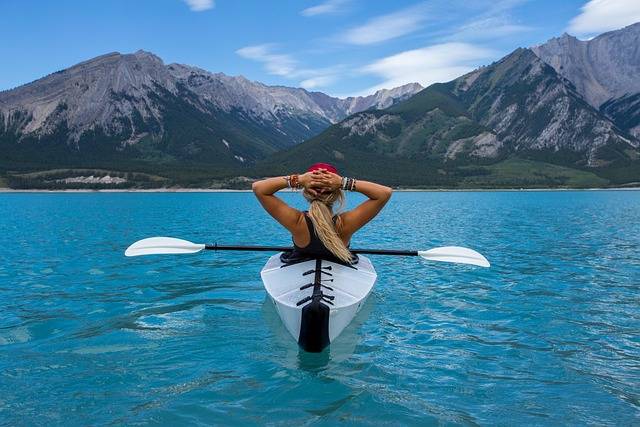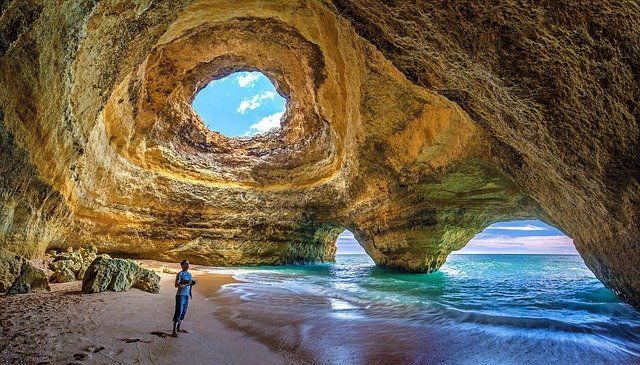Unlock the Magic of Tanzania: How to Plan an Unforgettable Trip to This African Gem
Share
| Table of Contents | |
|---|---|
| 1. Why Tanzania is a must-visit destination | |
| 2. Best time to visit Tanzania | |
| 3. Planning your itinerary for Tanzania | |
| 4. Wildlife safari experiences in Tanzania | |
| 5. Cultural experiences in Tanzania | |
Tanzania, Just the name evokes images of
vast savannahs, towering mountains, and abundant wildlife. Located in East
Africa, this beautiful country offers a mesmerizing blend of natural wonders,
cultural experiences, and adventure. From the iconic Serengeti National Park to
the majestic Mount Kilimanjaro, Tanzania has something for every traveler.
Why Tanzania is a must-visit destination
Tanzania is a country that truly captures
the essence of Africa. Its diverse landscapes and rich biodiversity make it a
must-visit destination for any traveler seeking an authentic African
experience. Whether you're a nature enthusiast, wildlife lover, or cultural
explorer, Tanzania has it all.
One of the main reasons to visit Tanzania
is its world-renowned national parks. The Serengeti National Park, with its
annual wildebeest migration, offers a spectacle like no other. Witnessing
thousands of animals crossing the plains is a humbling experience that will
stay with you forever. Additionally, the Ngorongoro Conservation Area is home
to the stunning Ngorongoro Crater, where you can spot an abundance of wildlife
in a breathtaking setting.
Best time to visit Tanzania
When planning a trip to Tanzania, it's
essential to consider the best time to visit. The country experiences two rainy
seasons: the long rains from March to May and the short rains from November to
December. It's generally recommended to avoid these periods as they can hinder
wildlife viewing and outdoor activities.
The best time to visit Tanzania is during
the dry season, which falls between June and October. This period offers
excellent wildlife viewing opportunities as animals gather around water
sources. Additionally, the weather is generally pleasant, with warm days and
cool nights.
If you're interested in witnessing the
great wildebeest migration in the Serengeti, the best time to visit is between
July and October. During this time, you can witness the dramatic river crossings
as the wildebeest make their way across crocodile-infested waters.
Planning your itinerary
When planning your itinerary for Tanzania,
it's important to consider the duration of your trip and your main areas of
interest. Tanzania offers a wide range of experiences, from wildlife safaris to
cultural encounters, so it's essential to prioritize what you want to see and
do.
A typical itinerary for Tanzania often
includes a visit to the Serengeti National Park, where you can witness the
great migration and spot the Big Five. Other popular destinations include the
Ngorongoro Crater, Tarangire National Park, and Lake Manyara National Park.
For those seeking adventure, a climb to the
summit of Mount Kilimanjaro, the highest peak in Africa, is a once-in-a-lifetime
experience. The trek can be challenging, but the sense of achievement and the
breathtaking views from the top are well worth the effort.
Top attractions in Tanzania
Tanzania is home to some of the most
incredible attractions in Africa. Here are a few highlights that should not be
missed:
Serengeti National Park: Known
for its annual wildebeest migration, the Serengeti offers unparalleled wildlife
viewing opportunities.
Ngorongoro Crater: This UNESCO
World Heritage Site is a natural wonder, with its vast caldera teeming with
wildlife.
Mount Kilimanjaro: The highest
peak in Africa, Kilimanjaro attracts adventurers from around the world who seek
to conquer its summit.
Zanzibar: This tropical
paradise is renowned for its white sandy beaches, crystal-clear waters, and
vibrant culture.
Wildlife safari experiences in Tanzania
A wildlife safari is a must-do experience
when visiting Tanzania. The country is home to an incredible array of wildlife,
including the Big Five (lion, elephant, buffalo, leopard, and rhinoceros). Here
are some popular safari destinations in Tanzania:
Serengeti National Park: As
mentioned earlier, the Serengeti is famous for its wildebeest migration. It's
also home to large populations of lions, cheetahs, elephants, and other iconic
African animals.
Ngorongoro Crater: Often
referred to as the "Garden of Eden," the Ngorongoro Crater is a
unique ecosystem that supports a vast number of animals, including the
endangered black rhino.
Tarangire National Park: Known
for its large herds of elephants, Tarangire also offers excellent opportunities
to spot lions, leopards, and other predators.
Cultural experiences in Tanzania
Tanzania is a culturally diverse country
with over 120 ethnic groups. Exploring the local culture is an enriching
experience that allows you to connect with the people and traditions of this
fascinating nation. Here are some cultural experiences to consider:
Visit a Maasai village: The
Maasai are one of the most well-known ethnic groups in Tanzania. Spend time
with them to learn about their traditional way of life, customs, and rituals.
Explore Stone Town in Zanzibar:
This UNESCO World Heritage Site is a melting pot of cultures, with influences
from Arab, Persian, Indian, and European civilizations. Lose yourself in its
narrow streets and immerse yourself in its history.
Attend a traditional music and
dance performance: Tanzania is known for its vibrant music and dance
traditions. From the rhythmic beats of the ngoma drums to the energetic
movements of the Maasai jumping dance, experiencing these performances is a
feast for the senses.
Accommodation options in Tanzania
Tanzania offers a wide range of
accommodation options to suit every budget and preference. Whether you're
looking for luxury lodges, tented camps, or budget-friendly guesthouses,
there's something for everyone. Here are a few popular choices:
Luxury lodges: These high-end
accommodations provide a luxurious and comfortable stay, often with stunning
views and excellent amenities.
Tented camps: For a more
authentic safari experience, consider staying in a tented camp. These camps
offer a close connection with nature while still providing comfort and
convenience.
Budget-friendly guesthouses: If
you're traveling on a budget, guesthouses and small hotels offer affordable options
without compromising on quality.
Transportation in Tanzania
Getting around Tanzania requires careful
planning and consideration. While the country has a well-developed tourism
infrastructure, transportation options can vary depending on your destination.
Here are some transportation options to consider:
Domestic flights: Tanzania has
several domestic airlines that operate flights between major cities and popular
tourist destinations. This is a convenient option if you're short on time or
want to cover long distances quickly.
Safari vehicles: When going on a wildlife safari, you'll typically travel in a 4x4 safari vehicle with a knowledgeable guide. These vehicles are designed for off-road conditions and offer a comfortable and safe way to explore the national parks.
Public transportation: If you're looking for a more budget-friendly option, public transportation, such as buses and mini busses, is available in most parts of the country. However, be prepared for crowded vehicles and longer travel times.
Safety tips for traveling in Tanzania
Tanzania is generally a safe country to
visit, but it's always important to take precautions to ensure a smooth and
hassle-free trip. Here are some safety tips to keep in mind:
Research your destination:
Before traveling to Tanzania, research the specific areas you plan to visit and
familiarize yourself with local customs and traditions.
Use reputable tour operators:
When booking tours or safaris, choose reputable and licensed tour operators to
ensure your safety and the ethical treatment of wildlife.
Take precautions against
malaria: Tanzania is a malaria-endemic country, so it's essential to take
preventive measures, such as using mosquito repellent, wearing long sleeves and
pants, and taking antimalarial medication.
Budgeting for your trip to Tanzania
Budgeting for a trip to Tanzania can vary
depending on your travel style and preferences. Here are some factors to
consider when planning your budget:
Accommodation: The cost of
accommodation can range from budget-friendly guesthouses to luxury lodges.
Research different options and choose according to your budget.
Transportation: Domestic
flights and safari vehicles can add to your expenses. Consider these costs when
planning your itinerary.
Park fees and permits: Many national
parks and conservation areas require entrance fees and permits. These costs
should be factored into your budget.
Food and drinks: While street
food and local restaurants can be affordable, dining in upscale establishments
can be more expensive. Plan accordingly based on your preferences.
Packing essentials for a trip to Tanzania
Packing the right essentials for your trip
to Tanzania is crucial for a comfortable and enjoyable experience. Here are
some items to consider:
Lightweight, breathable clothing:
Pack lightweight and breathable clothing, such as cotton or linen, as Tanzania
can have hot temperatures. Also, don't forget to include long-sleeved shirts
and pants for protection against mosquitoes.
Good walking shoes: Comfortable
walking shoes are essential, especially if you plan on going on safaris or
exploring national parks.
Sun protection: Don't forget to
pack sunscreen, a hat, and sunglasses to protect yourself from the strong
African sun.
Insect repellent: To protect
yourself from mosquitoes and other insects, pack a good quality insect
repellent.
Travel adapter: Tanzania uses a
three-pin plug, so make sure to bring a travel adapter if needed.
Tanzania is a truly magical destination
that offers a wealth of experiences for every traveler. From the breathtaking
wildlife safaris to the vibrant cultural encounters, this African gem will
captivate your heart and leave you with memories to last a lifetime. So, start
planning your trip to Tanzania and unlock the magic of this enchanting country.
Ready to embark on your unforgettable
Tanzanian adventure? Start planning your trip today and experience the magic of
this African gem for yourself!
Frequently Asked Questions

Related Blogs
 Why a Trip to Latvia is the Ultimate Hidden Gem for Your Next Vacation
Why a Trip to Latvia is the Ultimate Hidden Gem for Your Next Vacation Unwind and Relax: How to Make the Most of Your Vacation in Fiji
Unwind and Relax: How to Make the Most of Your Vacation in Fiji Unlock the Magic of Tanzania: How to Plan an Unforgettable Trip to This African Gem
Unlock the Magic of Tanzania: How to Plan an Unforgettable Trip to This African Gem Asia's Most Romantic Getaways: Top Honeymoon Destinations to Ignite Your Love
Asia's Most Romantic Getaways: Top Honeymoon Destinations to Ignite Your Love Discover Portugal's Hidden Gems: How to Make Your Trip to Portugal the Adventure of a Lifetime
Discover Portugal's Hidden Gems: How to Make Your Trip to Portugal the Adventure of a Lifetime Discover the Best Cambodian Dishes: 5 Must Try Recipes on Your Next Trip
Discover the Best Cambodian Dishes: 5 Must Try Recipes on Your Next Trip Top 7 Things to do on Your Holiday in Sweden for a Memorable Vacation
Top 7 Things to do on Your Holiday in Sweden for a Memorable Vacation The Love Affair Between French Tourists and Portugal : Exploring the Allure
The Love Affair Between French Tourists and Portugal : Exploring the Allure The Magic of Singapore: Unveiling the Reasons behind Chinese Tourists' Love
The Magic of Singapore: Unveiling the Reasons behind Chinese Tourists' Love
-300x600-px.gif)
